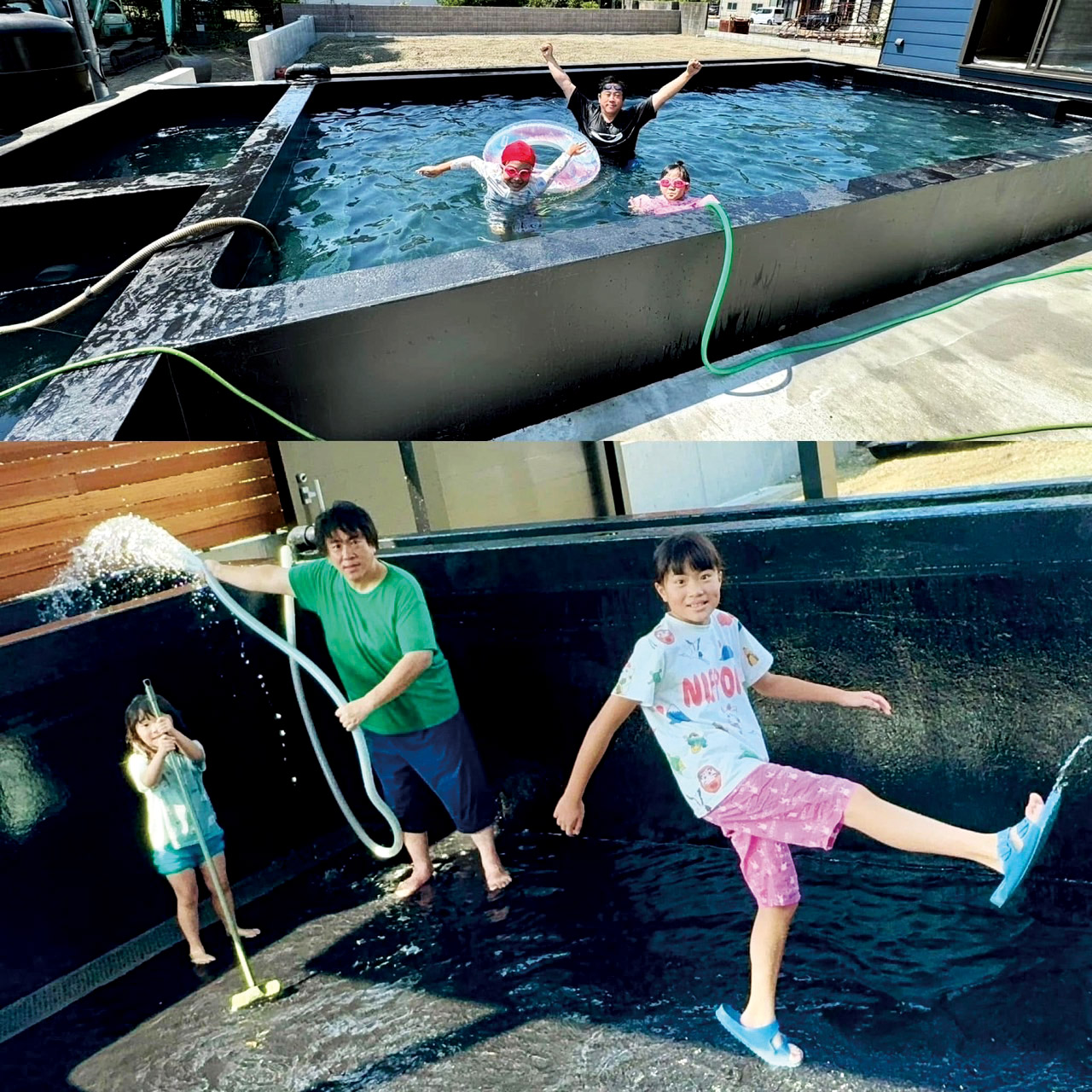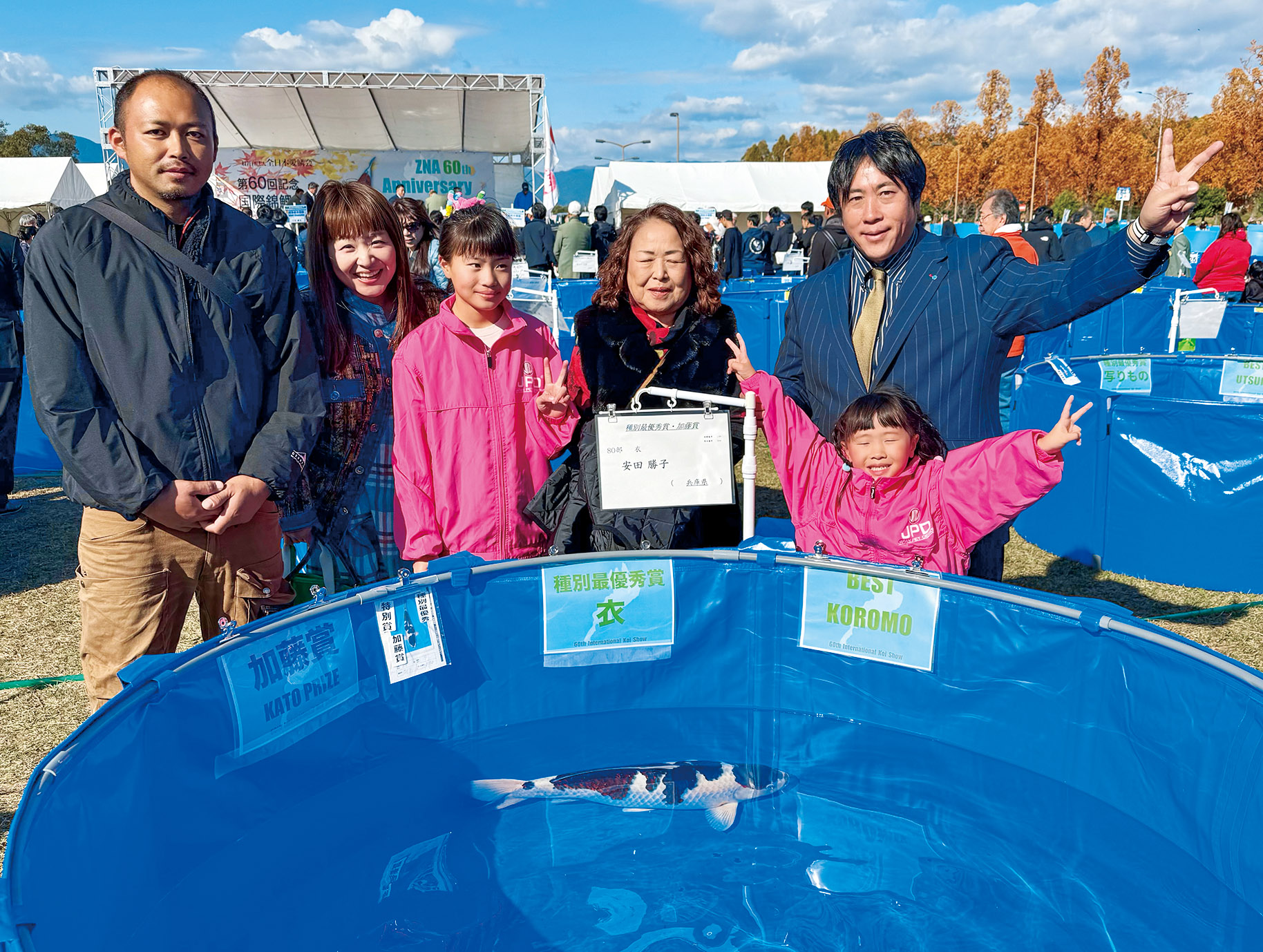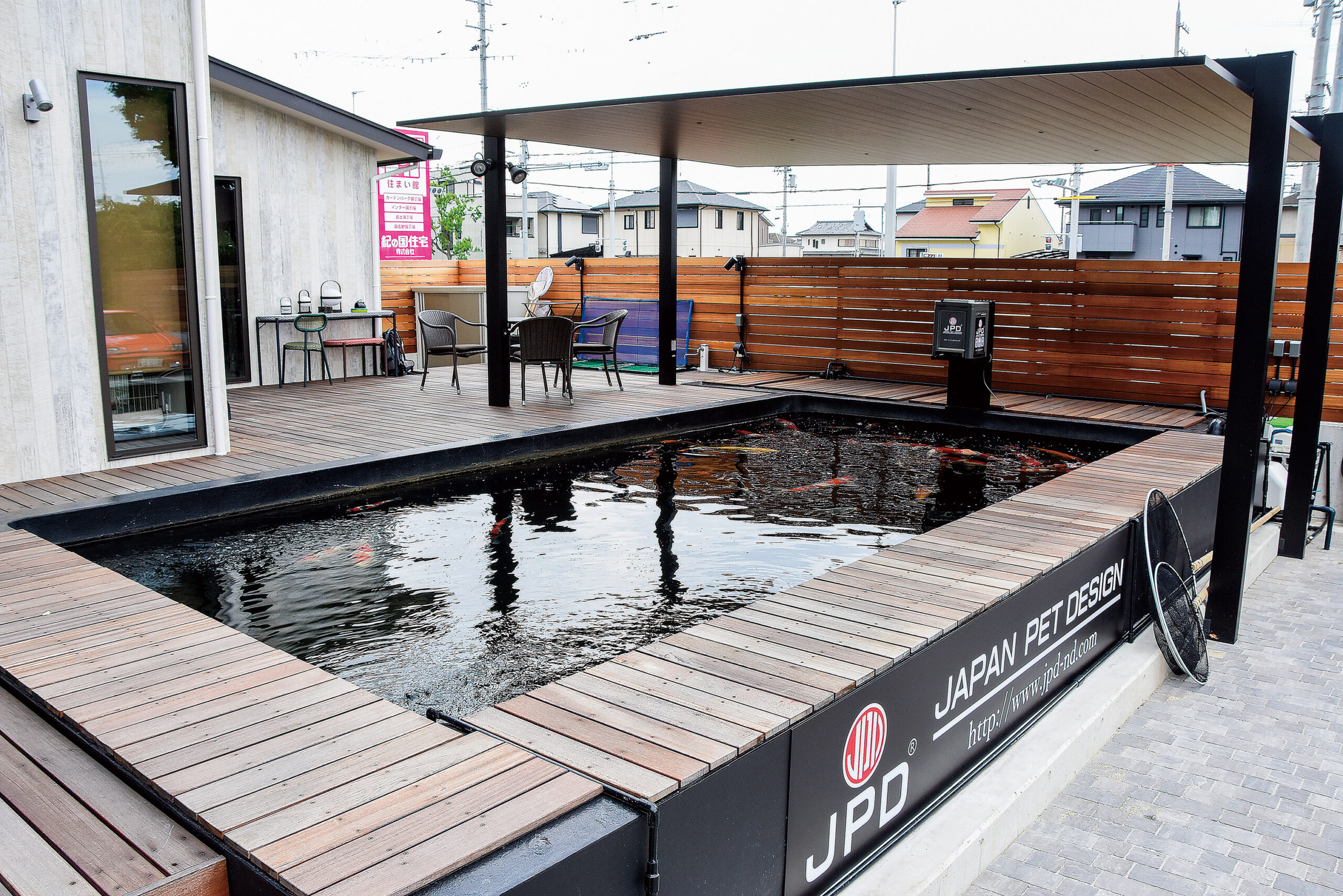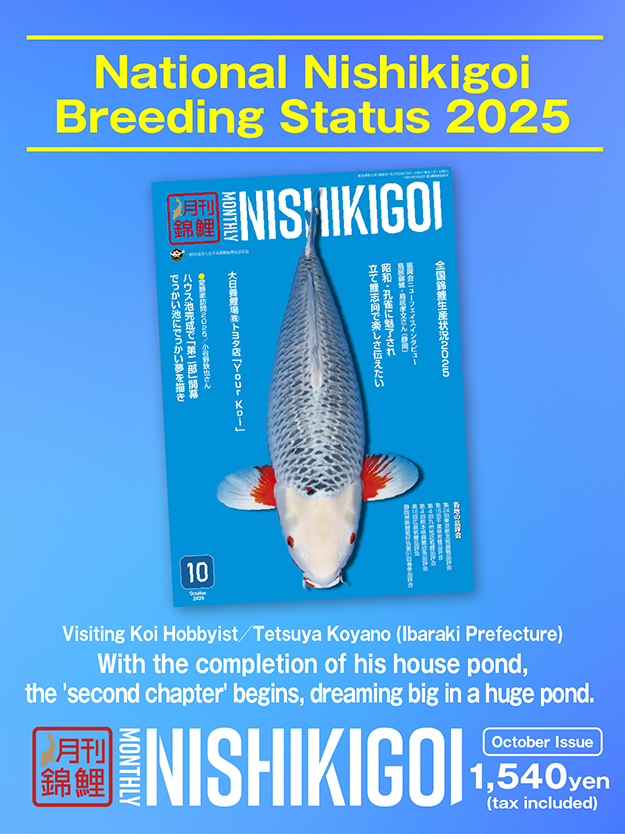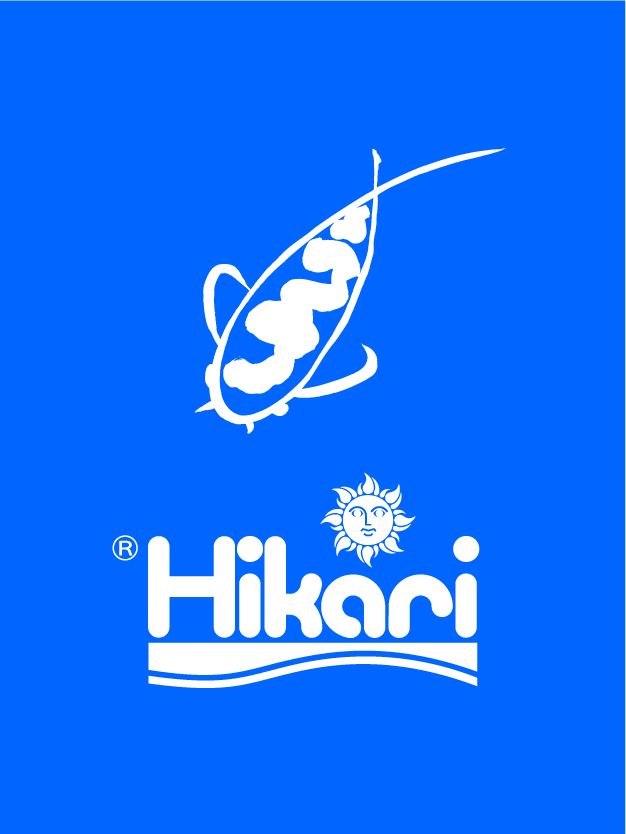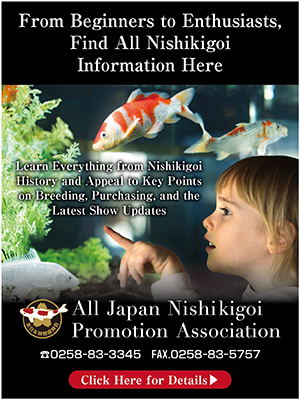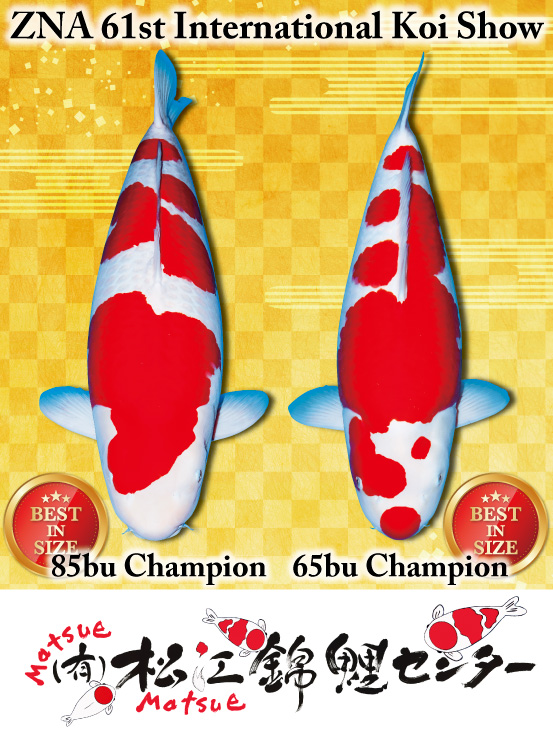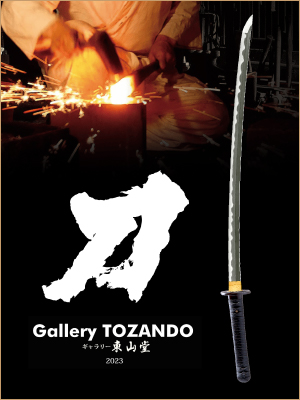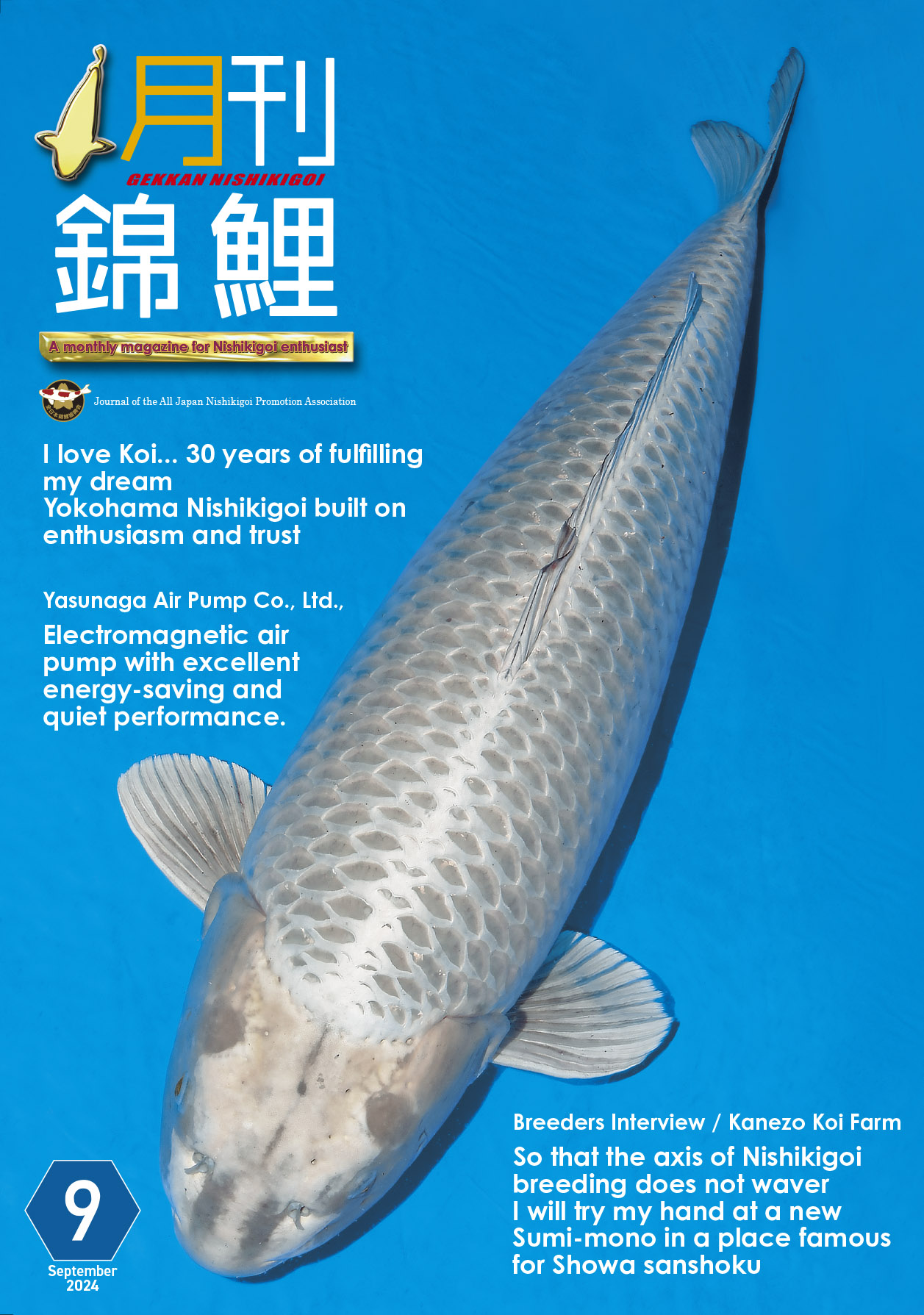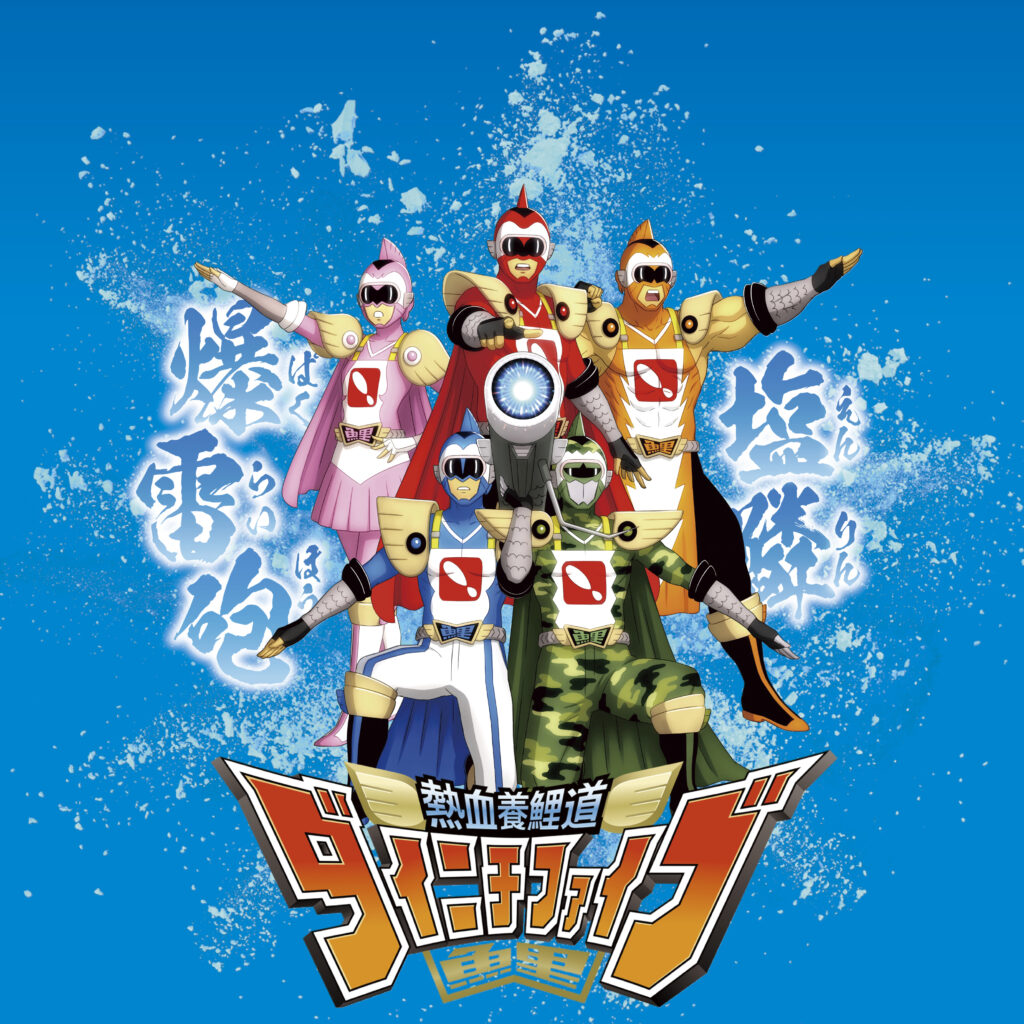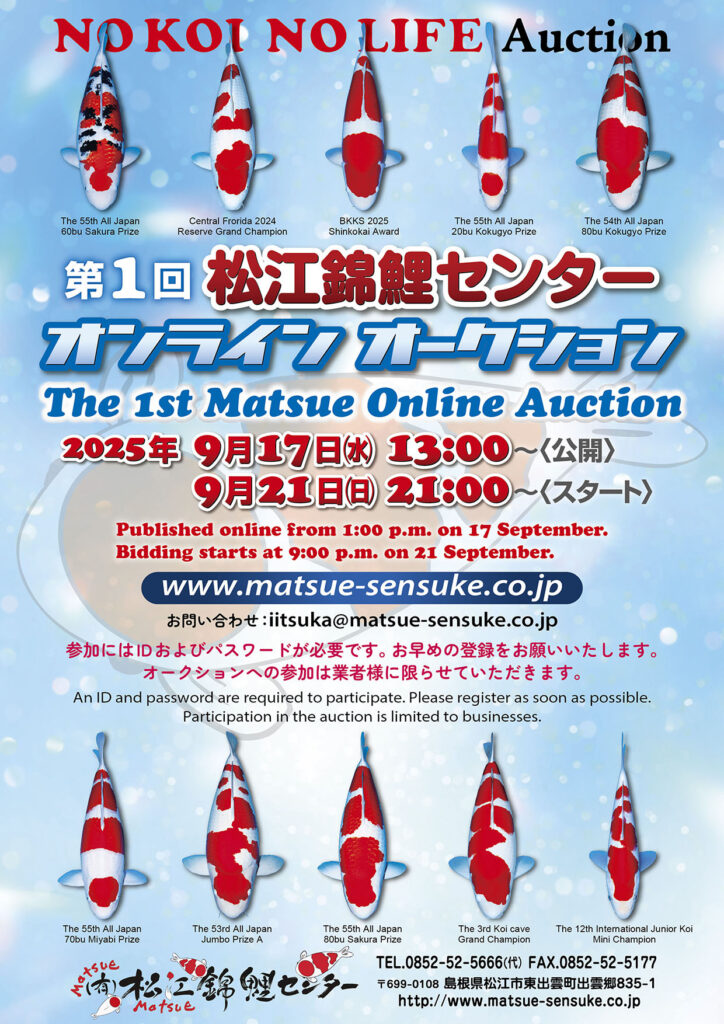90% of the temporarily kept koi have been moved to the new pond.
Though there are areas for improvement, we are advancing toward the goal
― So, you started putting koi in the pond last October, and they spent the winter here?
Yoshida: Yes, after autumn, I kept bringing back koi from competitions all over the country.
― The koi that were entrusted to the koi dealer?
Yoshida: That’s right. After each competition, I’d bring them here. So, at last year’s ZNA Koi Show, I entered all the koi I had in their care.
― Are all your koi in your home pond now?
Yoshida: I still leave about 10% of them there—the ones that improve better under professional care. It’d be risky to move them prematurely. But I’ve brought back every competition koi I considered to have peaked. Each time I retrieve them, I laugh at how many koi I’ve bought from all over these past ten years.
― Managing such a large quantity must make tasks like disinfection quite challenging.
Yoshida: Absolutely. We plan to share the process later on YouTube—after laying out the canvas for water acclimation and medicinal baths, we introduce the koi. We lost two, but there haven’t been any major illnesses, so things are going smoothly so far.
― Since you source fish from many places, the environment must be quite demanding.
Yoshida: True. The conditions are harsh, but perhaps the products are exceptional, or maybe my skills aren’t bad (laughs).
― Overwintering seems successful too?
Yoshida: Yes. Thanks to well water, temperatures stayed above 15°C except during the coldest spells, so we could feed small amounts of highly digestible food. I was worried about outdoor temperature drops, but it stayed warmer than expected.
― What’s the current feed mix (as of June 7)?
Yoshida: With the season starting, we’re using 30% Medicarp MAX, 30% Yokozuna, and 40% Shori—a full “growth-focused formula.” Medicarp MAX maintains health, while Yokozuna (germ-rich) and Shori (mass-building) support development. Earlier, from winter to spring, we stuck to a 1:1 ratio of digestible “Shogun” and Medicarp MAX.
― What are your plans now that the rainy season has begun?
Yoshida: If this year’s rainy season has average weather conditions, I plan to slightly reduce the feeding amount during this period. Since it’s an outdoor pond with fluctuating water temperatures, I’ll increase the ratio of Medi Carp MAX and Fujizakura.
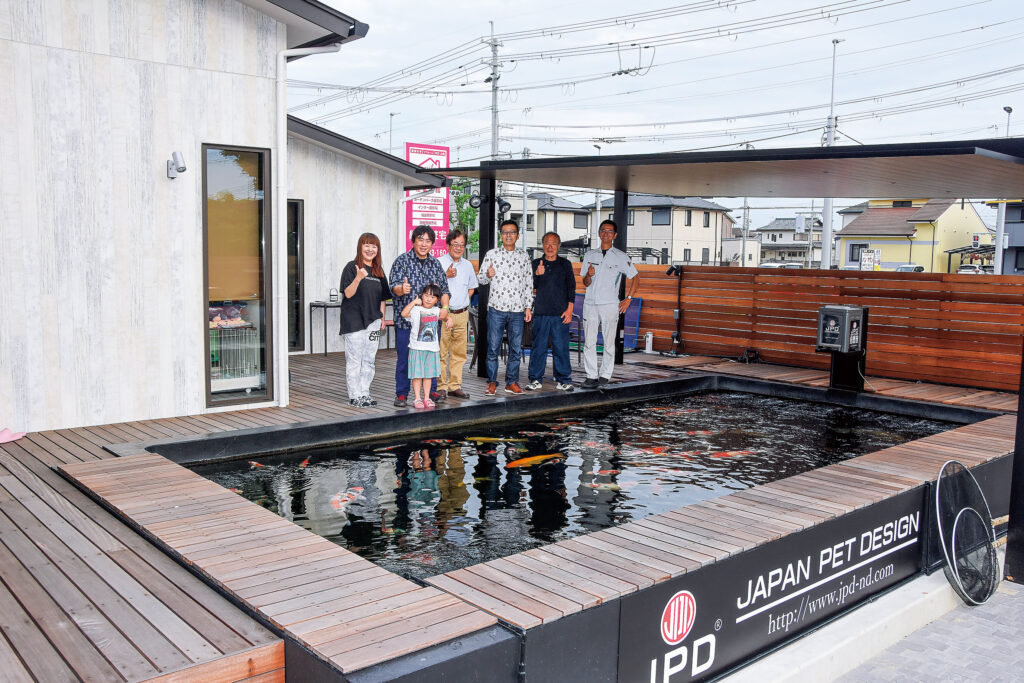
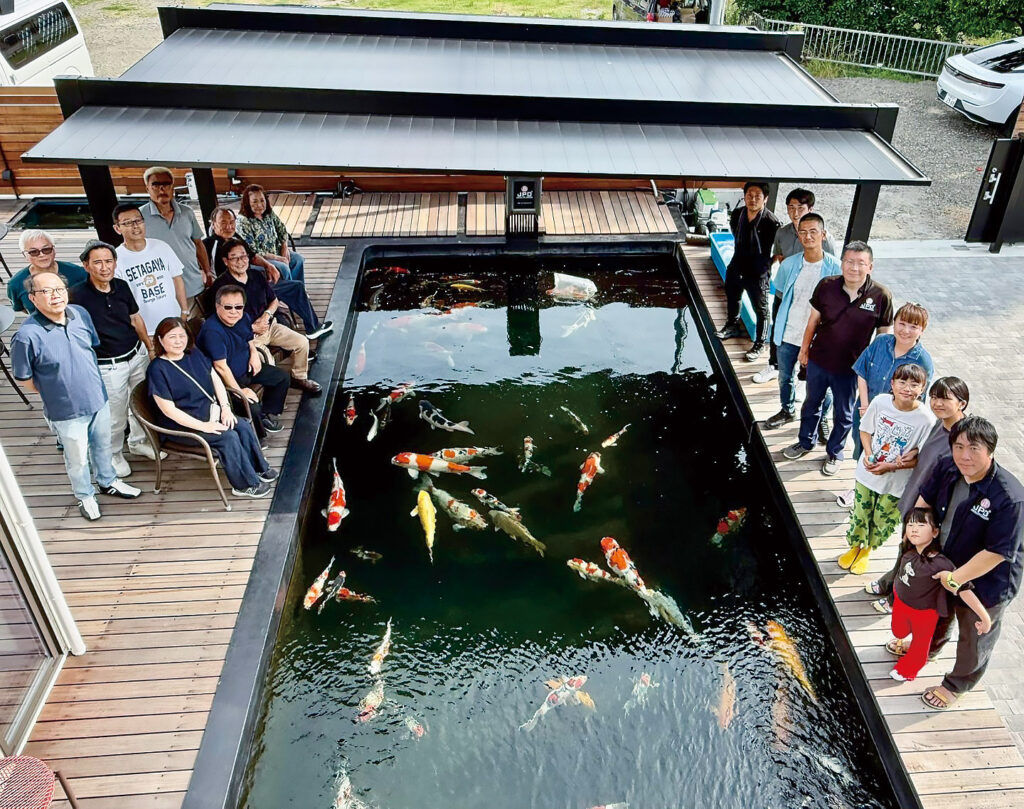
― Medi Carp MAX is great for periods of unstable water temperatures, right?
Yoshida: Some people mistakenly think MAX is too strong, but it’s not a medication. Although it’s a bit pricey, if possible, feeding 100% Medi Carp MAX during the rainy season is best for koi.
― A major advantage of Medi Carp MAX is that it can be fed continuously. After the rainy season ends, in a 1-ton pond with tap water, the water temperature sometimes gets too high and appetite drops, but this pond should allow for ample feeding, correct?
Yoshida: I don’t think we’ll have any issues with excessively high-water temperatures. For the peak season after the rainy season, I’ll use a mix of 50% Shori, 25% Shogun, and 25% Yokozuna. Yokozuna is germ-based to enhance digestion and absorption, and it features domestically produced silkworm pupae. During periods of high heat when appetite declines, the pupae improve palatability. It also contains a health-supporting ingredient called Silk Rose.
Water temperatures vary by pond, but nationwide trends show summers are getting hotter, often causing koi to fatigue and lose appetite with high-protein feed alone. That’s why I recommend a 50% germ-based (Shogun, Yokozuna) + 50% high-protein (Shori) blend. Our research institute has proven that mixing 50% germ feed increases consumption and promotes weight gain in fish.
― I see. This suggestion is worth considering for everyone, whether using groundwater or tap water. By the way, has everything gone smoothly since building the pond?
Yoshida: At first, there was a minor leak, and applying FRP was unexpected, but after that, there haven’t been any major issues.
― The 1-ton FRP pond you were using before is still being used as a holding pond, right?
Yoshida: Yes. Originally, I planned to move the filtration pond here as well, but now we’re drawing water midway from the pond’s circulation system. So, the 1-ton pond just has flowing water, and the overflow is supplemented with well water.
― The 1-ton pond doesn’t have a filtration tank, does it?
Yoshida: That’s right. Waste doesn’t flow away, so we need to remove it periodically with a net.
― Do you have any plans to further modify the pond in the future?
Yoshida: From the beginning, everyone told me, “You can’t get everything right at once,” but what bothers me most right now is the foam in the pond. I heard it would disappear if skimmed daily, but it’s not that easy. With this many koi (68 koi), there are bound to be challenges. Looking back, I realize I should have installed an overflow system—I’m currently consulting with professionals to see if it’s still possible to add one.
― What are your future goals for this pond?
Yoshida: It took some time, but now that all the entrusted fish have been moved in and the automatic feeder is installed, my immediate goal is to raise them meticulously and aim for top rankings at koi show.
― Winning awards with koi you’ve raised yourself must be doubly rewarding! Plus, it could contribute to product development at JPD. We’re excited to see what’s next. Enthusiasts, keep an eye on President Yoshida’s social media!
